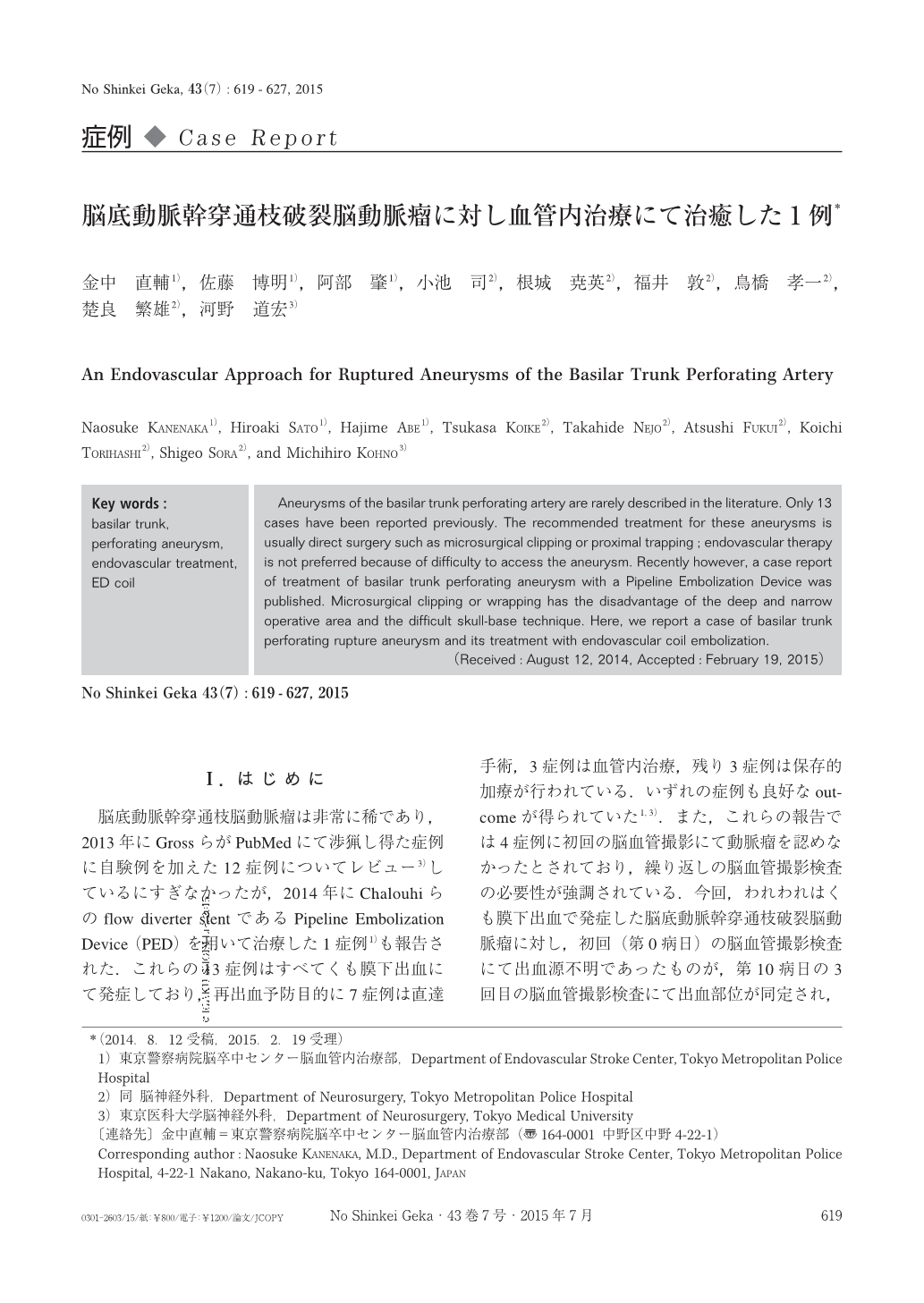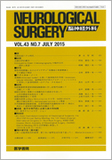Japanese
English
- 有料閲覧
- Abstract 文献概要
- 1ページ目 Look Inside
- 参考文献 Reference
Ⅰ.はじめに
脳底動脈幹穿通枝脳動脈瘤は非常に稀であり,2013年にGrossらがPubMedにて渉猟し得た症例に自験例を加えた12症例についてレビュー3)しているにすぎなかったが,2014年にChalouhiらのflow diverter stentであるPipeline Embolization Device(PED)を用いて治療した1症例1)も報告された.これらの13症例はすべてくも膜下出血にて発症しており,再出血予防目的に7症例は直達手術,3症例は血管内治療,残り3症例は保存的加療が行われている.いずれの症例も良好なoutcomeが得られていた1,3).また,これらの報告では4症例に初回の脳血管撮影にて動脈瘤を認めなかったとされており,繰り返しの脳血管撮影検査の必要性が強調されている.今回,われわれはくも膜下出血で発症した脳底動脈幹穿通枝破裂脳動脈瘤に対し,初回(第0病日)の脳血管撮影検査にて出血源不明であったものが,第10病日の3回目の脳血管撮影検査にて出血部位が同定され,その病変に対し血管内治療を行った症例を経験したので若干の文献的考察を加えて報告する.
Aneurysms of the basilar trunk perforating artery are rarely described in the literature. Only 13 cases have been reported previously. The recommended treatment for these aneurysms is usually direct surgery such as microsurgical clipping or proximal trapping;endovascular therapy is not preferred because of difficulty to access the aneurysm. Recently however, a case report of treatment of basilar trunk perforating aneurysm with a Pipeline Embolization Device was published. Microsurgical clipping or wrapping has the disadvantage of the deep and narrow operative area and the difficult skull-base technique. Here, we report a case of basilar trunk perforating rupture aneurysm and its treatment with endovascular coil embolization.

Copyright © 2015, Igaku-Shoin Ltd. All rights reserved.


